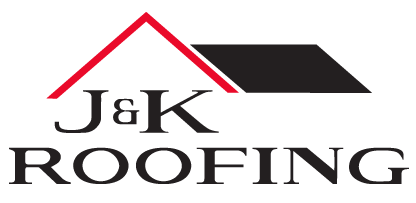
Tools of the Trade: Hammers, Safety Gear, Drones, and More
When you hire a roofing company to repair or replace your roof, they’ll show up with a specific set of tools and materials that help them complete your project safely and efficiently. It can be helpful and interesting to have a general idea of what the roofers are doing and what kinds of tools they use to repair or replace your roof.
While there are many roofing tools that help get the job done, we’re going to focus on some of the most important tools we use on a daily basis.
1. Ladders
Ladders might be the most obvious piece of equipment people think about when they think of a roofer, and that’s for a reason. You have to be able to get on the roof!
There are many types of ladders, but most often, you’ll see a roofing professional scale a straight or extension ladder. Extension ladders, in particular, are helpful because they allow someone to reach higher access points while remaining easy to transport and, depending on the material, lightweight.
2. Fall Protection
Roofing is one of the most dangerous occupations out there, primarily due to the number of deaths and injuries caused by falls. Roofers encounter many hazards on the job, including hazards associated with working at heights and from ladders, power tools, electricity, noise, hazardous substances, and extreme temperatures. Even on a single-story home, a fall from a roof is serious business.
A lack of protection, damaged equipment, or improper setup increases the risk of falling from height. You might see roofers use a harness and safety ropes while working from atop a roof. These systems are often connected to an anchor point along the top of the roof, preventing them from tumbling to the ground in the event of a slip or slide.
3. Roofing Hammer
A roofing hammer is different from a regular hammer. Instead of the typical two-prong portion of the head, it has a flat blade that can be used to quickly remove shingles or pry up nails. The other part of the head has a broad striking surface to make it easy to drive in nails. Some roofing hammers also incorporate magnetism or a special groove to help place nails.
Regular hammers will work, too—it’s up to individual preference. The key factor is comfort!
4. Air Compressor
You’re probably familiar with the sound of roofing jobs—tack tack! That comes from using an air compressor to power a roofing nail gun. Depending on the job, the compressor usually sits on the ground with a hose running up to the roofing project area.
5. Tear-off Shovel
Roofing professionals use a tear-off shovel to tear shingles off a roof before starting the repair or replacement. While the backside of a roofing hammer accomplishes the same goal, a tear-off shovel allows a roofer to remove shingles without kneeling or bending over, which is essential for preventing injury.
6. Chalk Line
There’s a particular beauty to a straight roof with sharp lines. To accomplish this, roofers align shingles with a simple snap of the chalk line. They’ll also use a chalk line to mark cuts in plywood when creating the roofing deck during a roof replacement or new construction.
7. Drone
Your roofing company may use a drone to perform an inspection or plan a repair or replacement from the ground. Drone technology allows for accurate measurements from above, saving time and preventing the risk of injury. Drones can also be used for thermal inspections, and storm damage identification including hail, wind, and missing shingles.
8. Aerial Imagery and Accurate Property Measurement Software
Roofing companies now utilize technology that provides accurate property measurements to create a comprehensive roofing diagram derived from high-resolution aerial imagery. It is used in conjunction with an in-person inspection to capture precise measurements that provide unprecedented accuracy for ordering materials specific to your roofing project.
9. Roofing Conveyor
If you’ve ever tried to lift a bundle of asphalt shingles, you know how difficult it is to physically carry them up on a ladder for a roof replacement. A roofing conveyor is like a conveyor belt on a semi truck that delivers shingle bundles to your roof. It makes lighter work of getting shingles and other roofing materials to where they’re needed, and is a safer and more efficient option for roofing crews.
10. Knuckle Boom
Like a conveyor, a knuckle boom lifts heavy equipment from the ground and positions it wherever needed on a roof. You typically won’t see one on small, single-story projects, but they’re often used for larger residential projects because they’re easy to maneuver.
A knuckle boom is like a miniature crane, and it’s similar to a cherry picker that you see on the back of construction trucks for tree trimming or work on telephone lines.
11. Magnetic Floor Sweeper
Once your project is complete, your roofing contractor should go over your property with a magnetic floor sweeper. This tool does exactly what you might guess: it picks up stray nails and other bits of metal debris that might have fallen during construction.
We Have All the Tools for Your Job
Again, this article only covers a portion of the essential tools needed to complete a standard roof repair or replacement project. J&K Roofing has everything required for your project—plus years of experience working on roofing projects in Denver, Golden, Colorado Springs, Fort Collins, and all along the Front Range.
Contact us today to get a free roof inspection and talk about your project. We’d love to hear from you!
